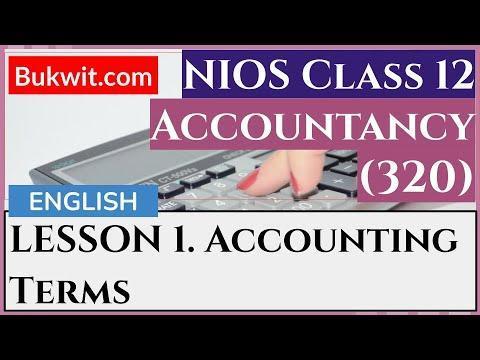
Whenever your mother asks you to go to the nearby grocery store to buy items of daily use like match box, candle stick, soap cake, coffee, spices etc. you need not pay for these items immediately. When you buy these items, the store owner immediately opens the page of a note book on which your father’s name is written. He records the value of items purchased. At the end of the month, your father goes to him. He again opens the same page tells the total amount to be paid and records when your father makes the payment. In a similar manner, he keeps the record of other customers also. Whenever he gets commodities from suppliers he records the same and also records the payment he makes to them. Similarly, every business small or big, sole proprietor or a firm keeps the record of the business transactions. Have you ever thought why do they keep record of business transactions? If they do not keep the record how will they know how much, when and to whom they have to make payments or from whom, how much and when they have to receive payments or what they have earned after a particular period and so on. Recording of transactions by a businessman in proper books and in a systematic manner is known as accounting. In this lesson you will learn about this in detail.
OBJECTIVES
After seen this video you will be able to
- explain the meaning of Book-Keeping;
- state the meaning and nature of accounting;
- distinguish between book keeping and accounting;
- explain the advantages & limitations of accounting;
- explain the branches of accounting;
Accounting – An Introduction Nios Class 12th Chapter 1st
BOOK KEEPING AND ACCOUNTING
A business undertakes number of transactions. Can you estimate the number of transactions a business undertakes? It depends upon the size of a business entity. Every day business transactions may be around hundreds/thousands. Can a businessman remember all these transactions in every respect? Not at all. So it becomes necessary to record these business transactions in details and in a systematic manner. Recording of business transactions in a systematic manner in the books of account is called bookkeeping. Book-Keeping is concerned with recording of financial data. This may be defined as.
- Economic events :It is the occurring of the consequence to a business organisation which consists of transactions that are measurable in monetary terms. Purchase of a Machinery, installing and keeping it ready for manufacturing is an economic event which consists of a number of financial transactions. These transactions are (a) buying the machine, (b) transporting the same, (c) preparing the site for its installation and (d) incurring expenditure on installing the same
Identification, Measurement, Recording and Communication :
Identification implies determining what transactions are to be recorded i.e. items of financial character are to be recorded. For example, goods purchased for cash or on credit will be recorded. Items of non-financial character such as changes in managerial policies, etc. are not recorded in the books of accounts.
Measurement means quantification of business transactions into financial terms by using monetary unit. If an event cannot be quantified in monetary terms, it is not considered fit for recording in the books of the firm. That is why important items like appointment, signing of contracts, etc. are not shown in the books of accounts.
BRANCHES AND OBJECTIVES OF ACCOUNTING
Financial Accounting–
It is concerned with recording the transactions of financial character, summarising and interpreting them and communicating the results to the users. It ascertains profit earned or loss incurred during a period (usually one year as accounting year) and the financial position as on the date when the accounting period ends. It can provide financial information required by the management and other parties. The word accounting and financial accounting are used interchangeably.
Cost Accounting –
It analyses the expenditure so as to ascertain the cost of various products manufactured by the firm and fix the prices. It also helps in controlling the costs and providing necessary costing information to management for decision making.
ACCOUNTING AS AN INFORMATION SYSTEM AND ITS USERS
In 1970, the Accounting Principles Board of The American Institute of certified Public Accountants (AICPA) emphasized that the function of accounting is to provide quantitative information, primarily financial in nature, about economic entities, that is intended to be useful in making economic decisions. Accounting is often called the
“Language of Business”. It is the common language used to communicate financial information to individuals, organisations, government agencies about various aspects of business such as financial position, operating results (i.e. Profit or loss) and cash flows.
ACCOUNTING TERMS
Transaction
It is an event which involves exchange of some value between two or more entities. It can be purchase of stationery, receipt of money, payment to a supplier, incurring expenses, etc. It can be a cash transaction or a credit transaction.
Purchases
This term is used for goods to be dealt-in i.e. goods are purchased for resale or for producing the finished products which are meant for sale. Goods purchased may be Cash Purchases or Credit Purchases. Thus, Purchase of goods is the sum of cash purchases and credit purchases.
Sundry Creditors
Creditors are persons who have to be paid by an enterprise an amount for providingn goods and services on credit.